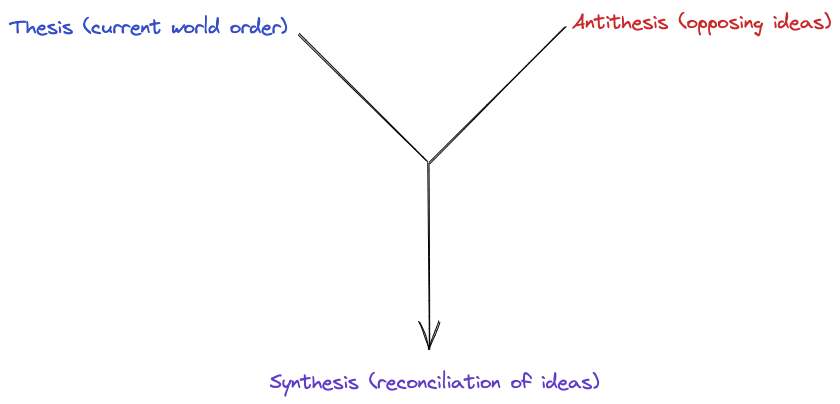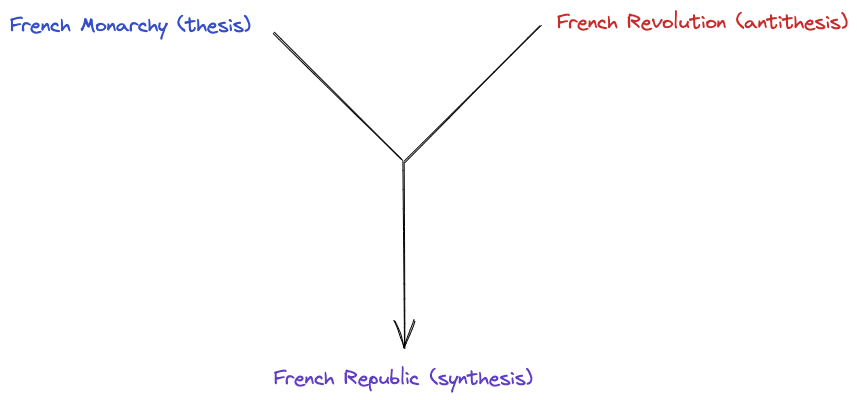“Those who cannot remember the past are condemned to repeat it.” - George Santayana
The present can seem like a very unstable and turbulent time. It seems as if the world is splitting itself apart, becoming more polarized and opinionated. However, to understand the direction the world is headed, we need to look back in the past for answers.
Now, Hegel is notorious for being incredibly difficult to read. His works are often long-winded and use poor english to convey his thoughts. However, his ideas are incredibly important to understand. However, one of his ideas is incredibly important to understand: the dialectic. When broken down, the dialectic is not a very complicated idea.
The dialectic refers to a method of reasoning and argumentation that involves the examining opposing ideas. It contains three parts: the thesis, antithesis, and synthesis. The thesis and antithesis are opposing ideas. The synthesis is the the merging of the two ideas, reconciling them to form a new idea that contains good attributes of both the thesis and antithesis. It is often associated with philosophical traditions and has been used as a tool for intellectual inquiry and debate throughout history.
Hegel’s dialectical reasoning states that history progresses through a series of conflicts and resolutions. According to Hegel, the current world order can be viewed as the thesis. New, opposing ideas that are in conflict with the current world order are the antithesis. The synthesis is the new world order that is formed after the conflict between the thesis and antithesis is resolved.
Here’s a diagram of the dialectic:

Hegel used the example of the French Revolution to explain his idea. The French Monarchy was the thesis, the current world order. The drastic opposite of the French Monarchy was the French Revolution, the antithesis. The synthesis was the new world order that was formed after the French Revolution, which was the French Republic.

Expect more philosophy to come. - RA